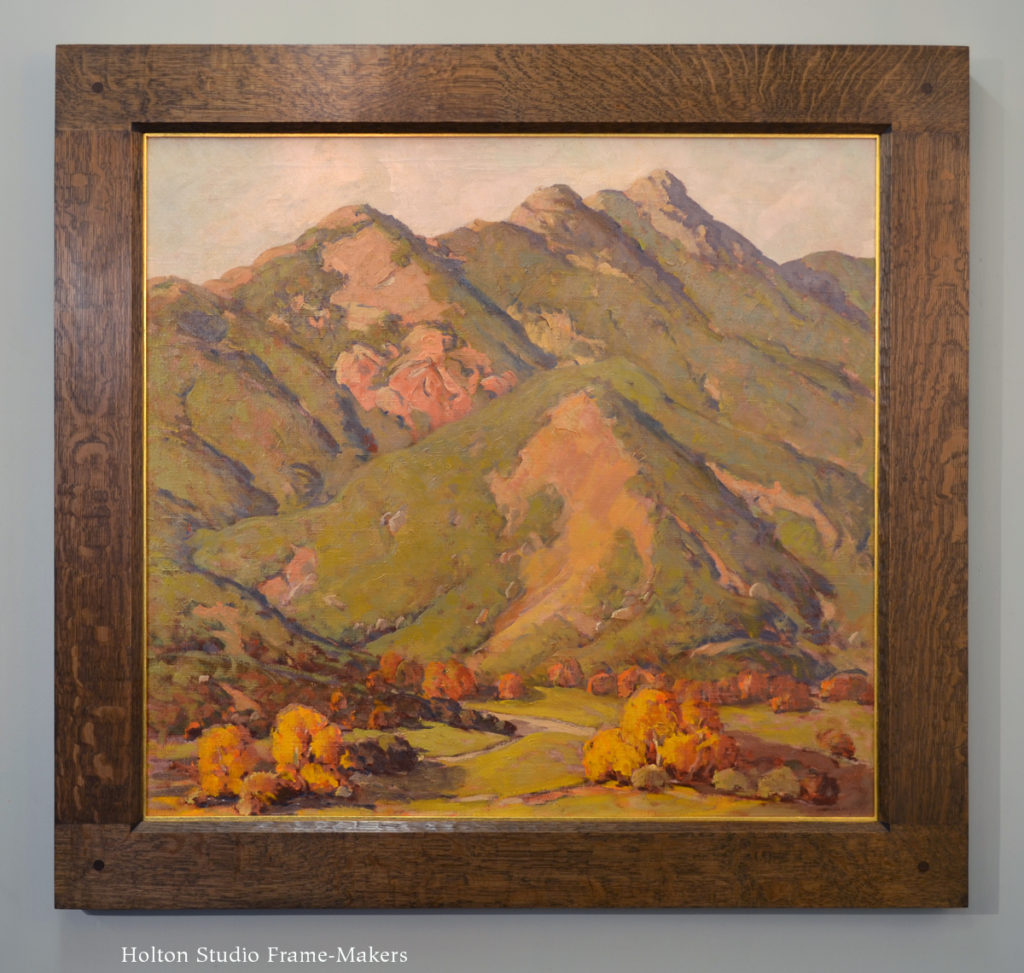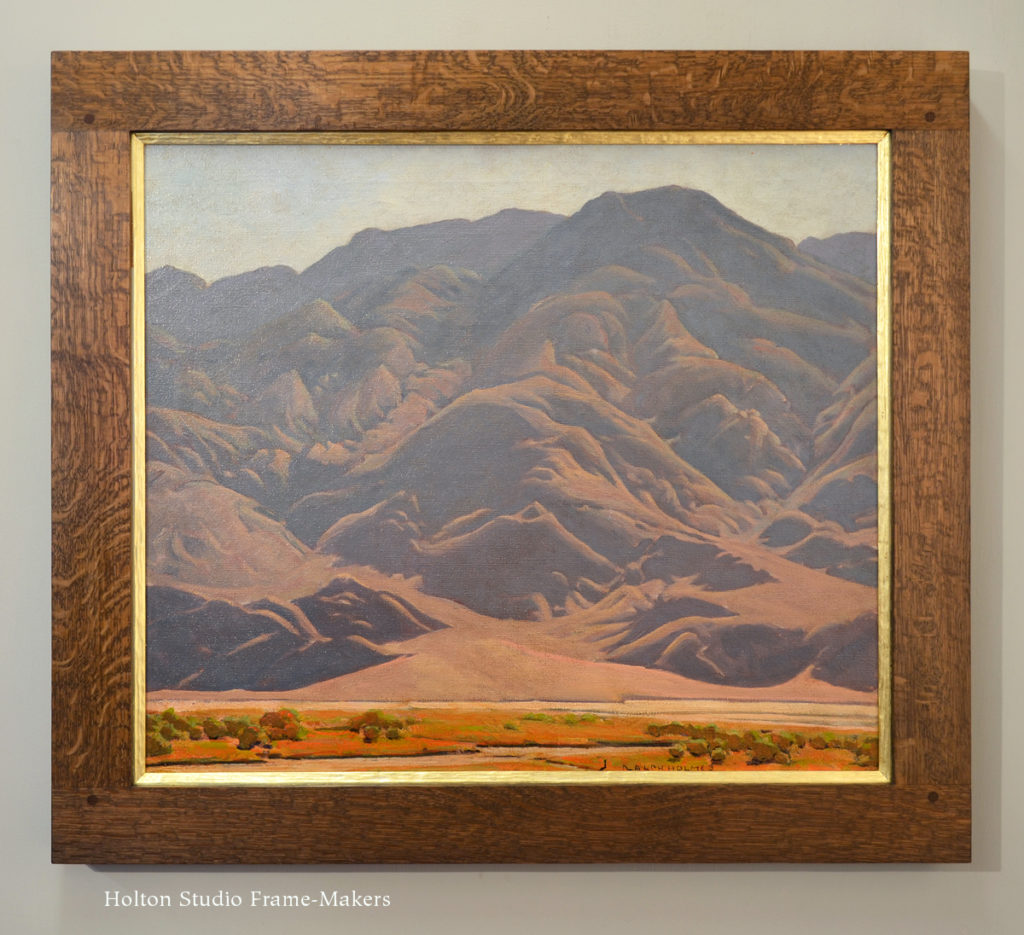This summer a good customer in the Los Angeles area brought up these two oil paintings by Ralph Holmes (1876-1963)—a renowned early twentieth century painter from that region. Holmes, however, arrived in California after he was well along in his career. He was born and raised in Illinois, and studied at the Chicago Art Institute and Paris before returning to Chicago to teach at the Art Institute, and then moving to Pittsburgh to chair the Department of Painting and Decorating at the Carnegie Institute of Technology. In 1916 he headed to the Southwest, spending time on a Hopi reservation before moving to California in 1918 and settling in Atascadero, teaching at the Otis Art Institute and Marlborough School for Girls. From 1939-41 Holmes served as president of the California Art Club.
Holmes was a highly regarded muralist, as you might guess from these two pieces and the ease with which the artist has graphically translated a mountainous landscape to a flat canvas using a muted palette that allows the picture to harmonize with an architectural setting. This quality of “mural feeling,” as Walter Crane called it, made these two canvases especially gratifying to frame, as the frames can fulfill their natural architectural function, and the role the paintings themselves aspire to.
The first one, which is 32″ x 34″, is in a simple mortise-and-tenon frame No. 1100 CV—4″ — our No. 1100 with the sight edge chamfer carved—and a gilt slip. The frame’s in quartersawn white oak with Nut Brown stain.
The second one is the same wood and stain, and the frame is also a mortise-and-tenon design, but instead of the carved sight edge and simple narrow slip, we used a gilt carved liner with a steep bevel inside our plainest mortise-and-tenon frame, the No. 1000. At 24″ x 28″, this painting is a little smaller, so the frame is 3″ wide. Both frames are 1-3/4″ thick.
« Back to Blog
